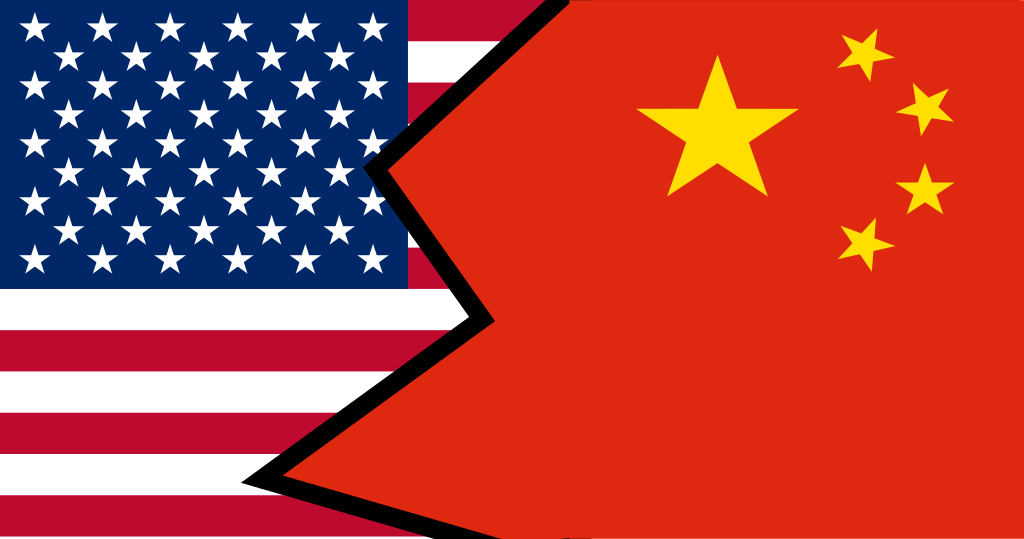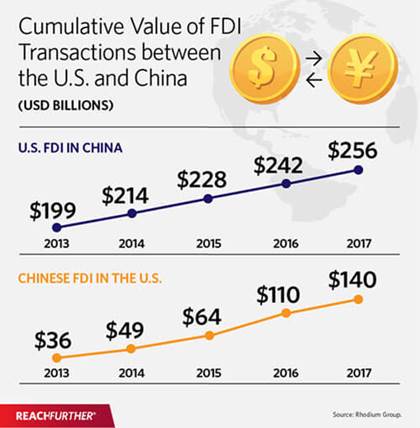
The prospect of escalating trade frictions between China and the United States is a dark cloud hanging over an otherwise humming global economy. Last week’s negotiations in Beijing, which ended with no deal, have shown how far apart both nations are. It now seems likely that the U.S. government will implement its $50 billion of announced tariffs on Chinese imports, which will be followed by Chinese retaliatory tariffs.
This worst-case scenario is not unthinkable anymore, and it would massively hurt consumers and firms in both nations. Our leaders must understand that there will be no turning back from any collateral damage, and need to focus on negotiating a “new deal” that ensures continued economic cooperation, or we all suffer the consequences.
The stakes are higher than just a trade war
Political rhetoric has put us on a dangerous path with much broader implications than an escalating spiral of tariffs. The Trump Administration has reinforced the widely held conception that China’s economic development comes at America’s expense. Other important groups in Washington—including parts of the business community, the defense community, members of Congress and think tank analysts—have taken a similarly confrontational stance. This widespread hawkish rhetoric has escalated beyond tariffs to include restrictions on Chinese investment, a resurrection of U.S. industrial policy and visa restrictions for Chinese students.
Meanwhile, China itself has buttressed confrontational U.S. sentiment by delaying much-needed economic reforms and doubling down on policies that are inconsistent with the spirit of free markets, such as the Made in China 2025 program, an industrial strategy that subsidizes local firms and requires foreign companies in certain industries to enter into joint ventures with domestic businesses.
In short, what started with trade frictions has quickly expanded into a more systemic breakdown in the good faith that undergirds U.S.-China relations, and the worst-case scenario is now a costly divorce of the world’s two largest economies.
Everybody loses: A divorce will come with huge costs
Such a breakup would severely disrupt trade flows, with huge costs for American businesses and consumers. Trade between both nations reached a staggering $711 billion last year. Tariffs of any magnitude would massively disrupt these flows. American consumers would pay more for their clothes, phones and groceries. American exports to China, including agriculture and high-tech products, would be susceptible to Chinese retaliation. The $32 billion in education and tourism expenditures that Chinese citizens currently spend in the U.S. each year would also be at risk.
Secondly, divorce would endanger almost half a trillion dollars of foreign direct investment (FDI) assets that businesses have built in the past three decades. U.S. companies have $260 billion worth of hard-to-liquidate factories, research centers and retail shops in China. An escalation would mean huge write-downs and a major hit for the global competitiveness of U.S. firms—which would also reduce these firms’ values and, in turn, the retirement savings of American workers. Conflict would also choke off growing Chinese investment in the U.S. and all the benefits it brings. Chinese companies employ 140,000 Americans, and they will employ hundreds of thousands more in the coming decades if they follow the same path as other Asian multinationals. But if tensions aggravate, those investments will not happen.

Cumulative value of FDI transactions between the U.S. and China
Third, an escalation could result in a dangerous bifurcation of technology ecosystems. The U.S. has long restricted high-tech exports to China and is now considering banning Huawei, ZTE, and other Chinese technology firms from U.S. markets. China would certainly retaliate and further limit the already restricted participation of U.S. companies in the Chinese market. A new cold war in technology would be bad for consumers on both sides, and it would severely slow down the pace of global innovation.
Finally, escalating economic tensions would also affect our lives beyond economics. More aggressive posturing is already producing borderline racist and McCarthyist comments about Chinese students and researchers in the U.S. This will only get worse if frictions escalate and could poison an entire generation of Americans and Chinese towards each other. Also, without the positive role of shared economic interests, geo-strategic risk is elevated, as well. Other nations may be forced into picking sides between the U.S. and China. Even if most countries align with the U.S., an assumption that cannot be guaranteed, a renewed division of the world into opposing camps would add severe geopolitical risk.
Getting to a “new deal”
Divorce can still be avoided, but both the U.S. and China need to take productive steps to work on the relationship. There is an opportunity to address valid concerns harbored by the U.S. and other advanced economies, as well as by Beijing, and put relations on a more sustainable foundation. The start of negotiations last week was a good first step, but the outcome also showed how far apart both nations are. Several priorities for the coming weeks jump out:
1. Both nations need to separate national security from economics. Security concerns exist, and they need to be taken seriously. However, the current U.S. administration is increasingly conflating both, which goes against U.S. tradition. Similarly, security and control have taken greater roles in China in recent years, increasingly trumping economics. Both nations need to double their efforts to fence in national security threats, while allowing other economic interactions to proceed. For example, both nations could jointly compile a “white list” of sectors that have zero relevance for national security and pledge to not interfere in related commercial transactions.
2. Leaders need to negotiate a reasonable policy package that addresses U.S. concerns but also considers China’s legacy and development status. The list of demands that the U.S. brought to Beijing was not only aggressive but also not grounded in sound analysis. As I have argued before, asking for a $200 billion reduction in the U.S. trade deficit with China does not make sense because that data is based on outdated trade accounting standards. And without changing fundamental U.S. savings and consumption habits, American consumers would simply switch from buying Chinese imports to goods from other developing regions such as Southeast Asia and Latin America. It is also unrealistic to ask China to give up industrial policy—a defining characteristic for Chinese economic policy and a permanent feature in many Asian economies. Other U.S. demands are legitimate and would bring great improvement for U.S. businesses and ultimately the Chinese people; for example, creating a level playing field for foreign companies and bringing the level of Chinese import tariffs further in line with other large economies.
3. Any deal will need a clear roadmap for implementation. One of the major concerns with Chinese practices is that implementation of market reform promises has historically been very slow. For a “new deal” policy package, both nations should come up with a clear roadmap, including concrete commitments and implementation deadlines. Some measures outlined in the latest U.S. proposal make sense, such as quarterly meetings to review progress, but others are not acceptable, such as the demand that China not challenge any U.S. measures in response to delayed implementation.
What businesses can do
Next week, U.S. companies will come before the Trump administration for a public hearing on the proposed tariffs. Given what is at stake under the worst-case divorce scenario, businesses have a strong case to make.
We should help our leaders to better grasp the full magnitude of the damages from a serious divorce. Businesses are on the frontlines, and many of us have current data and relevant information grounded in real-time market dynamics that policymakers need to hear.
We must also help leaders understand the real issues and call out political gamesmanship that does not make sense. For example, instead of insisting on a reduction in the bilateral trade deficit by a certain amount, the U.S. would be served better if negotiations focused on specific and tangible reductions of market access barriers for U.S. companies and exports.
If we get the relationship back on a calmer and more productive track, the business community will have to play an important role in monitoring the proper implementation of commitments on both sides. It is not too late to right the bilateral ship and make the U.S.-China relationship work again.
This article originally appeared on the East West Bank website.




